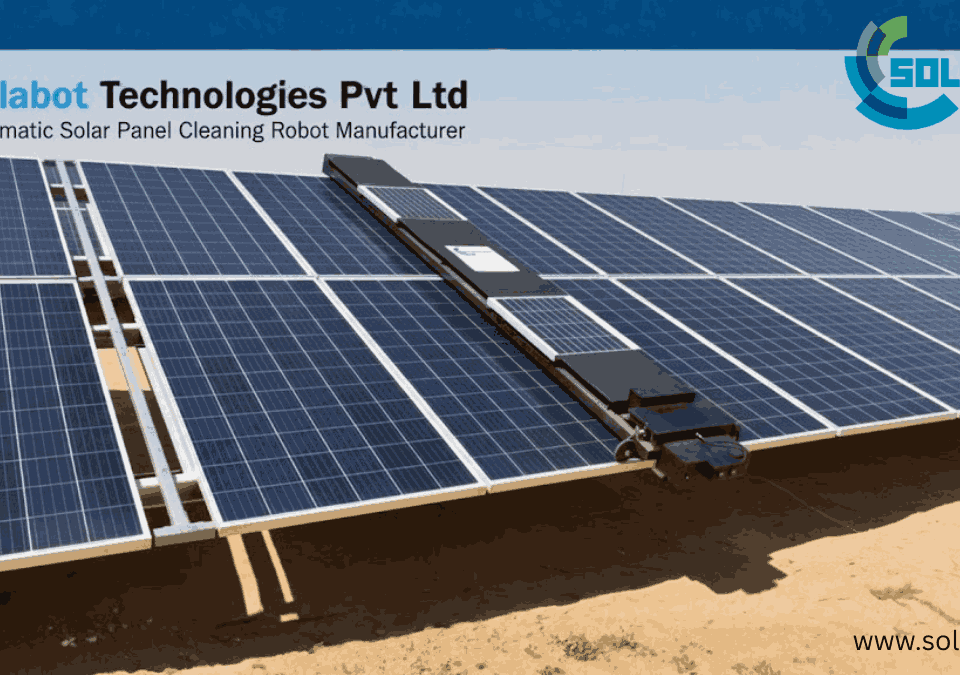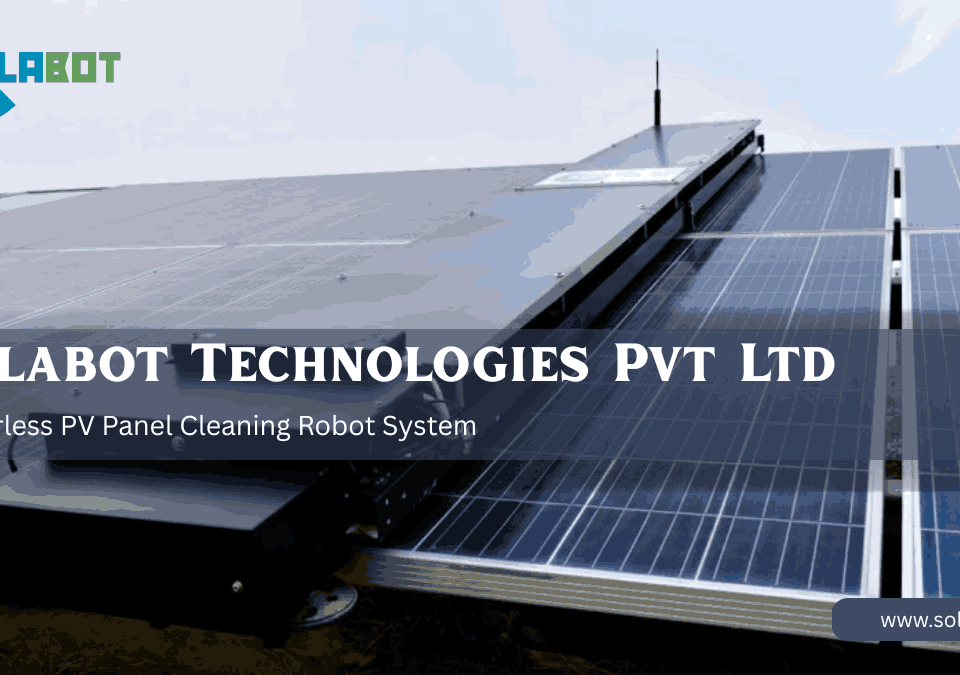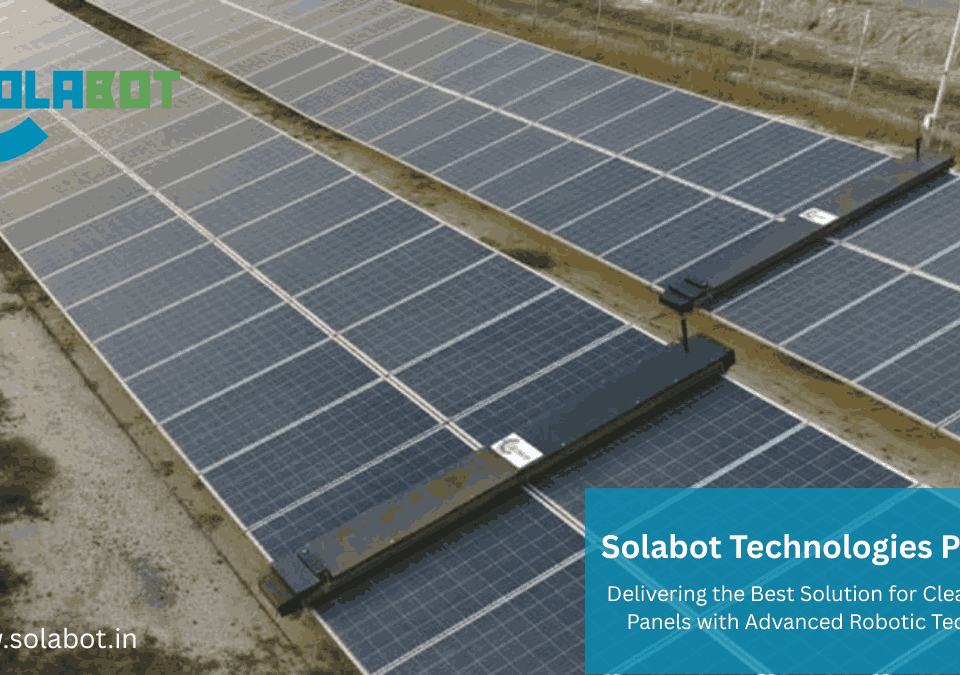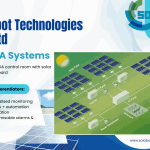
Solabot SCADA control room with solar plant dashboard
August 14, 2025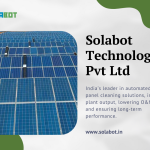
Robotic arm cleaning solar panels on a large solar farm at sunrise — Solabot Technologies automated cleaning system
August 26, 2025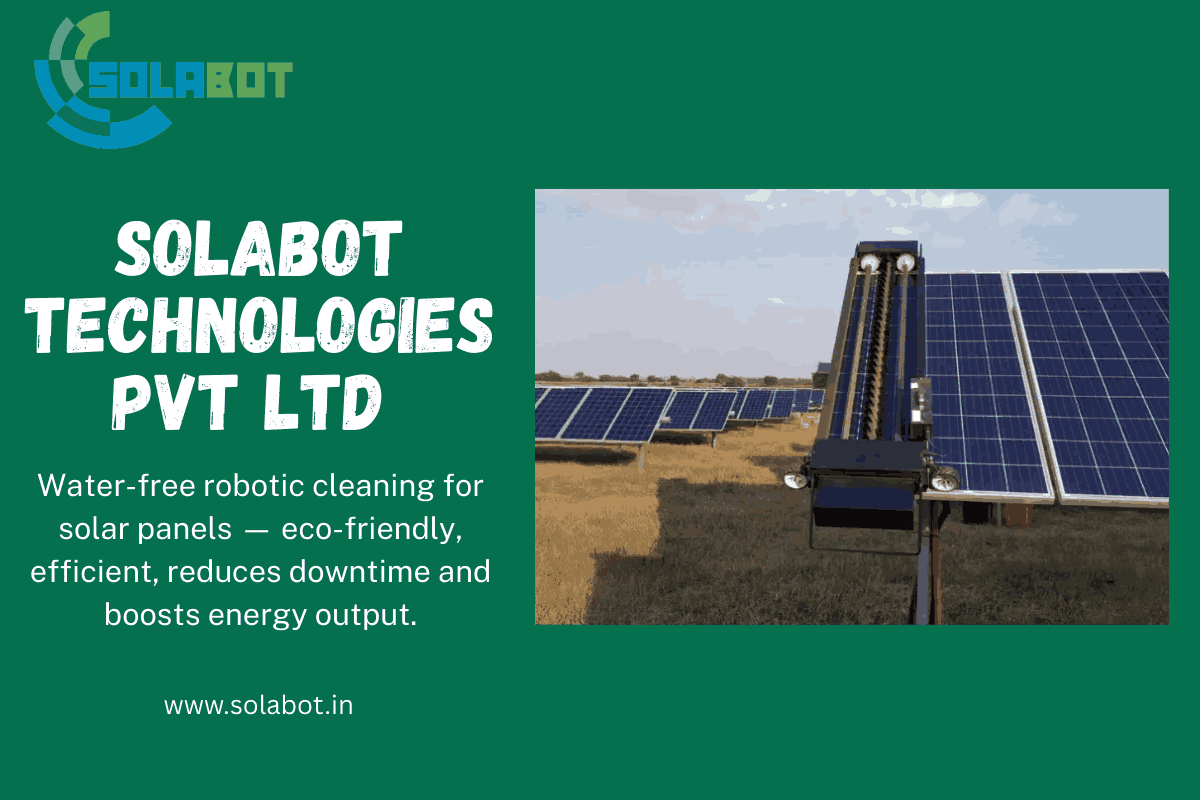
Solabot Technologies Pvt Ltd — Water-Free Robotic Cleaning of Solar Panels
Introduction
As solar installations proliferate across rooftops, industrial parks and utility-scale sites, maintaining panel cleanliness has become a mission-critical task. Dirt, dust, bird droppings and industrial pollution steadily reduce photovoltaic (PV) system performance — and traditional cleaning methods, especially water-based ones, are often costly, labour-intensive and unsustainable in water-scarce regions.
Solabot Technologies Pvt Ltd brings a smarter, greener solution: water-free robotic cleaning of solar panels. Their autonomous cleaning robots are designed to keep PV arrays operating near peak efficiency while cutting operating costs, conserving precious water and improving safety. This blog explores how water-free robotic cleaning works, why it matters, the advantages for plant owners, and how Solabot’s approach is shaping the future of solar operations and maintenance (O&M).
Why Water-Free Robotic Cleaning of Solar Panels?
Conventional cleaning methods rely heavily on water and manual labour. For large installations this translates into:
- High water consumption (a scarce resource in many regions).
- Significant labour and logistic costs.
- Risk to personnel working at height or on large, exposed sites.
- Frequent shutdowns or reduced output during cleaning windows.
Water-free robots eliminate most of these drawbacks. They use engineered brush systems, low-abrasion pads and precise motion control to remove deposits without water, delivering reliable cleaning with minimal human intervention.
What is a water-free solar cleaning robot?
At its core, a water-free solar cleaning robot is an autonomous or semi-autonomous device that traverses PV panels and removes surface contamination using mechanical action (brushes, microfiber pads), suction, or electrostatic techniques — all without liquid. Key elements typically include:
- Autonomous navigation: GPS, edge detection and sensors to map panel layouts and avoid obstacles.
- Gentle cleaning heads: Soft, anti-static brushes or microfibre rollers that dislodge dirt without scratching the glass.
- Modular design: Scalable units that can be deployed on single rows, rooftop arrays or vast ground-mounted farms.
- Battery or solar power: Recharging via onsite power or integrated solar panels for extended runtime.
- Connectivity and monitoring: Remote dashboards, scheduling and telemetry for predictive O&M.
Solabot’s systems are engineered for the real-world constraints of Indian solar sites: dusty environments, variable tilt angles, rooftop clutter, and the need for robust, low-maintenance equipment.
How Solabot’s water-free robots work (a practical walk-through)
- Site survey & mapping: The robot is configured with the array layout and cleaning schedule using Solabot’s planning tools.
- Autonomous cleaning run: The robot navigates along panel rows, making controlled passes. Cleaning heads lift and activate exactly where needed.
- Debris removal: Brushes and suction (where fitted) remove particulate and organic build-up; the system may capture residues in a small onboard bin for disposal.
- Data capture: Sensors record cleaning quality, runs completed, and any anomalies (e.g., cracked glass or shading). Data feeds into the operator dashboard.
- Repeat scheduling: Cleaning frequency is set based on soiling patterns and production targets; robots can operate during off-peak hours or as scheduled without human accompaniment.
Key benefits of water-free robotic cleaning
- Water conservation: Eliminates or dramatically reduces water use — critical in arid regions and for sustainability goals.
- Operational cost savings: Fewer manual crews, reduced logistics, and lower O&M overheads over time.
- Increased energy yield: Regular, effective cleaning helps panels operate closer to their rated output.
- Improved safety: Removes the need for personnel to work at height or in hazardous conditions.
- Scalability: Modular robots can scale across sites — from small rooftops to utility-scale farms.
- Predictive maintenance: Integrated sensors and reporting highlight issues early, lowering repair costs and downtime.
Environmental and regulatory advantages
Water use for PV cleaning is under scrutiny in many jurisdictions. Water-free cleaning supports corporate sustainability targets and helps project owners meet regulatory or financing conditions tied to resource stewardship. Reducing truck movements for manual cleaning also lowers carbon emissions.
Typical applications and site types
Solabot’s water-free robots are suitable for:
- Rooftop commercial and industrial installations — where water access is limited.
- Large ground-mounted solar farms — where hauling water is logistically costly.
- Agricultural solar (agrivoltaics) — where irrigation demands compete with cleaning needs.
- Solar parks in arid and desert regions — where water scarcity is acute.
Return on investment (ROI) considerations
Switching to robotic cleaning involves an upfront equipment cost, but owners can expect:
- Lower recurring labour and water expenses.
- Reduced downtime during cleaning cycles.
- Better long-term energy capture and payback via sustained production.
Solabot offers tailored ROI models that factor in site soiling rates, local labour/water costs and expected lifetime savings to help clients make an informed decision.
Installation, service and support
Solabot provides end-to-end deployment:
- Site assessment: Detailed evaluation to recommend robot models and schedules.
- Installation & commissioning: Onsite setup, initial runs and staff training.
- Maintenance & spares: Local service plans, remote diagnostics and spare parts supply.
- Software updates: Over-the-air upgrades to navigation and reporting systems.
Their support network is designed to reduce downtime and keep robots productive throughout the seasons.
Conclusion
Water-free robotic cleaning represents a pragmatic evolution for solar O&M — combining sustainability, safety and economics. For plant owners seeking to optimise energy yield, reduce operating costs and conserve water, Solabot Technologies Pvt Ltd offers robust, field-proven robotic solutions tailored to Indian conditions.
If you’re managing rooftop PV, a commercial park or a utility-scale farm, Solabot’s water-free robotic cleaning of solar panels can transform your cleaning regime from a logistical headache into a high-efficiency, data-driven process. Contact Solabot Technologies to arrange a site assessment, ROI analysis and live demonstration — and start keeping your solar assets cleaner, greener and more productive.

